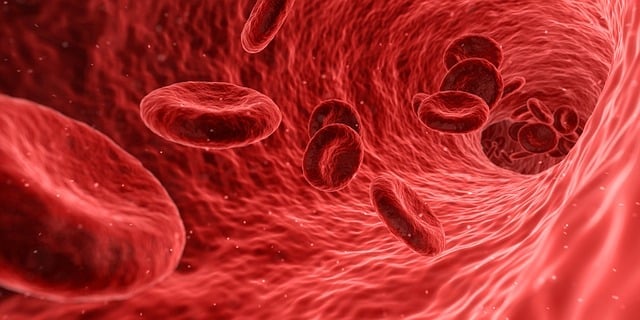Cell Therapy Analytics

This month's Discussion Group came together for an hour of specialist discussion about the key challenges and opportunities for improving cell therapy analytics. Glyn Stacey, Chief Executive at SSCBio, led the discussion with an audience of key industry leaders from various pharmaceutical companies.
The discussion covered the following topic areas: effective analytics for allogeneic cell therapies and progression through clinical trials. The debate also touched on the development of relevant bioassays for potency, comparability, and the identification of critical quality attributes (CQAs).
Current Issues in the Manufacture of Human Pluripotent Stem Cell (hPSC)-based Medicines
Stacey started the session with a brief overview of the current analytics landscape. In a presentation entitled, ‘Current Issues in the Manufacture of hPSC-based Medicines,' Stacey spoke of the development history and key considerations affecting hPSC-based medicines today.
HPSC-based medicines are fast becoming a promising area of development in cell therapeutics and, according to Stacey, “are starting to look like a real product”. In 2006, the hPSCreg project set up a database of hPSCs, with nearly 4000 cell lines recorded with ethical and scientific information (see www.hpscreg.eu).
- Refining Analytics for Gene Delivery Systems
- Building the Future: AAV Potency Assays and Cell Therapy Analytics
- Inciting Rapid Standardisation in Cell and Gene Therapy Manufacturing
In 2020, the hPSCreg also initiated a database of hPSC-based clinical trials which has verified and registered approximately 100 clinical trials for 22 different disease indications, including diabetes, ischemic heart diseases, cancer, and neural disease and trauma. The project is also developing a supplementary database of cell lines intended for clinical use (LINCU hPSCs). This will analyse the available information found on the cell lines being proposed for clinical trial.
Quality of Starting Materials
Stacey continued by discussing some of the key issues of hPSC line development, including the quality of the raw materials which form part of the final product (i.e., donor and non-donor cells etc.). “For vectors, there is a whole range of considerations that need to be addressed, such as sequence, integrity, activity, and purity,” Stacey claimed.
The selection and characterisation of seed stock is a particularly critical process in producing cell lines. “If you get this or the vector assessment wrong, it can seriously undermine the integrity of the process,” Stacey explained. Due diligence is, therefore, necessary and incorporates donor selection, the quality of the cell line derivation process and vector manufacture, as well as seed cell bank quality control and safety testing.
To implement product CQAs developers must have a thorough understanding of cell biology and the critical process parameters.
Finally, traceability and risk assessment are vital for the determination of product safety. As Stacey puts it, “it can be very challenging these days to take forward a cell line or cell bank developed in a research lab if it is without a complete history of the cell line itself.” “Regulators advise that you cannot rely on testing a product into safety, where there are evident knowledge gaps.”
In-Process Controls and Development of Product Critical Quality Attributes
When it comes to ensuring consistency and safety for in-process controls “we need to have suitable biomarkers to demonstrate reproducible development during bioprocessing,” Stacey continued. “If the cell line candidate is not on the right track, developers can waste a huge amount of money and time.”
It is similarly essential to be aware of process contaminants and their potential impact on potency, safety, and quality. There is potential for genetic variants and microbial contamination to arise during the development phase. Stacey also explained how intermediate stages of manufacture might be cryopreserved and thus, require quality control for consistency.
To implement product CQAs developers must have a thorough understanding of cell biology and the critical process parameters. Stacey went on to say, “being able to identify valuable quality attributes of intermediate stages provides a key indicator of when a product is on track and when it is not”. He continued by touching on how functional assays “are crucial for the development of suitable potency assays and could be complicated by multiple modes of action.”
Discussion: Future Perspectives and Unmet Needs
Once the presentation concluded, Stacey opened the floor for questions. One audience member inquired about future opportunities in the analytical development of hPSC-based cell therapeutics. According to Stacey, looking ahead, automation will bring many benefits to help streamline in-process and CQA testing. However potential drawbacks may also occur. For instance, automated methods may introduce new kinds of critical process parameters and CQAs.
Conversation then turned to current unmet needs within the landscape, with audience members raising the issue of tumorigenicity. Tumorigenicity refers to the production of tumours from the product cells themselves and this risk may be increased due to either the appearance of or overgrowth by, genetic variants with transformed properties. Methods under investigation within the study of the tumorigenic condition include genomic change, miRNA profiles, growth characteristics, and in vivo animal studies.
Despite such efforts being made in the area, “a better understanding of relationships between cancer-associated mutations and safety is necessary,” Stacey contributed. Observed genetic changes and patient safety during clinical trials are yet to be proven. Improving the accuracy of animal studies in tumorigenicity is another area of development. This is because immune system differences and tissue environments between humans and animal models may mean that animal models do not sufficiently predict the tumorigenicity which might occur in patients.
Concluding Thoughts
The discussion concluded with some final thoughts on future analytical strategies for cell therapies. With an increasing adoption of robust analytical tools to ensure safe and quality therapeutic cell products are advanced through to the clinic; the field looks to hold great promise.
At Oxford Global, we couldn't have been more pleased with the turnout for our Cell Discussion Group. The conversation was engaging, the debate stimulating, and the industry insights invaluable. We will continue our Discussion Group series in September with a session focusing on ‘Novel Technologies Advancing Downstream Bioprocessing'. Learn more about the Oxford Global Discussion Group series at our Cell Portal.
Want to find out more about the latest cell therapy news? Register now for Oxford Global‘s Cell UK: In-Person event to advance your understanding of cell-based products to ensure clinical and commercial success.







